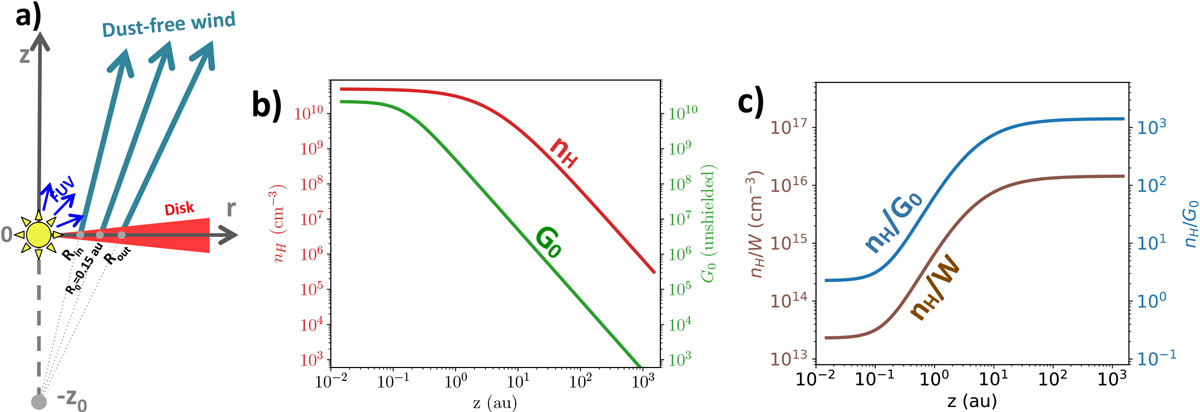Fig. 8

Wind model adopted in this work. Panel a: schematic view of the geometry of the model. Streamlines are assumed to be straight lines launched from the disk (see Fig. 1a). The wind velocity Vj is constant and equal to 100 km s−1. The wind launching region extends from Rin = 0.05 au out to Rout = 0.3 au. We focus on the chemical evolution of a representative streamline launched from 0.15 au in the disk and reduce the problem to 1D (see Sect. 4.1). Panel b: prescribed density nH and unshielded FUV flux G0 profile along the representative streamline launched from 0.15 au for wind solution ⓐ (see Table 3). For other models, nH and G0 are simply rescaled according to the Eqs. (19) and (17), respectively. Panel c: prescribed nH ∕G0 and nH ∕W ratio along the same streamline. We note that due to the collimation of the flow (z0 ≫ R0), these ratios increase with distance by a factor of ![]() . In the absence of dust, the opacity of the gas in the visible is negligible so that the
nH ∕W ratio is expected to be the true local ratio between the density and visible field.
. In the absence of dust, the opacity of the gas in the visible is negligible so that the
nH ∕W ratio is expected to be the true local ratio between the density and visible field.
Current usage metrics show cumulative count of Article Views (full-text article views including HTML views, PDF and ePub downloads, according to the available data) and Abstracts Views on Vision4Press platform.
Data correspond to usage on the plateform after 2015. The current usage metrics is available 48-96 hours after online publication and is updated daily on week days.
Initial download of the metrics may take a while.


